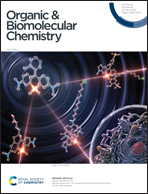Phenyliodine bis(trifluoroacetate) as a sustainable reagent: exploring its significance in organic synthesis
Abstract
Iodine-containing molecules, especially hypervalent iodine compounds, have gained significant attention in organic synthesis. They are valuable and sustainable reagents, leading to a remarkable surge in their use for chemical transformations. One such hypervalent iodine compound, phenyliodine bis(trifluoroacetate)/bis(trifluoroacetoxy)iodobenzene, commonly referred to as PIFA, has emerged as a prominent candidate due to its attributes of facile manipulation, moderate reactivity, low toxicity, and ready availability. PIFA presents an auspicious prospect as a substitute for costly organometallic catalysts and environmentally hazardous oxidants containing heavy metals. PIFA exhibits remarkable catalytic activity, facilitating an array of consequential organic reactions, including sulfenylation, alkylarylation, oxidative coupling, cascade reactions, amination, amidation, ring-rearrangement, carboxylation, and numerous others. Over the past decade, the application of PIFA in synthetic chemistry has witnessed substantial growth, necessitating an updated exploration of this field. In this discourse, we present a concise overview of PIFA's applications as a ‘green’ reagent in the domain of synthetic organic chemistry. A primary objective of this article is to bring to the forefront the scientific community's awareness of the merits associated with adopting PIFA as an environmentally conscientious alternative to heavy metals.

- This article is part of the themed collection: Celebrating the 100th birthday of Professor Sukh Dev


 Please wait while we load your content...
Please wait while we load your content...